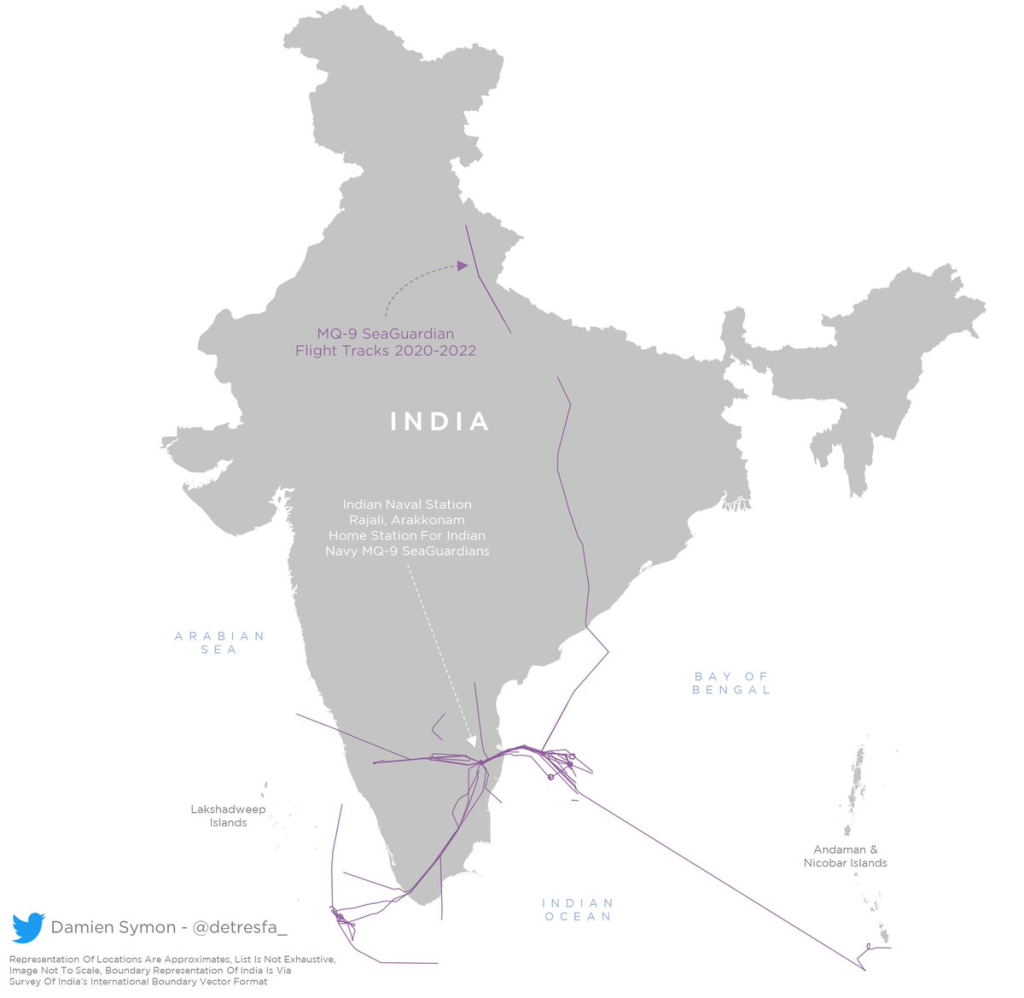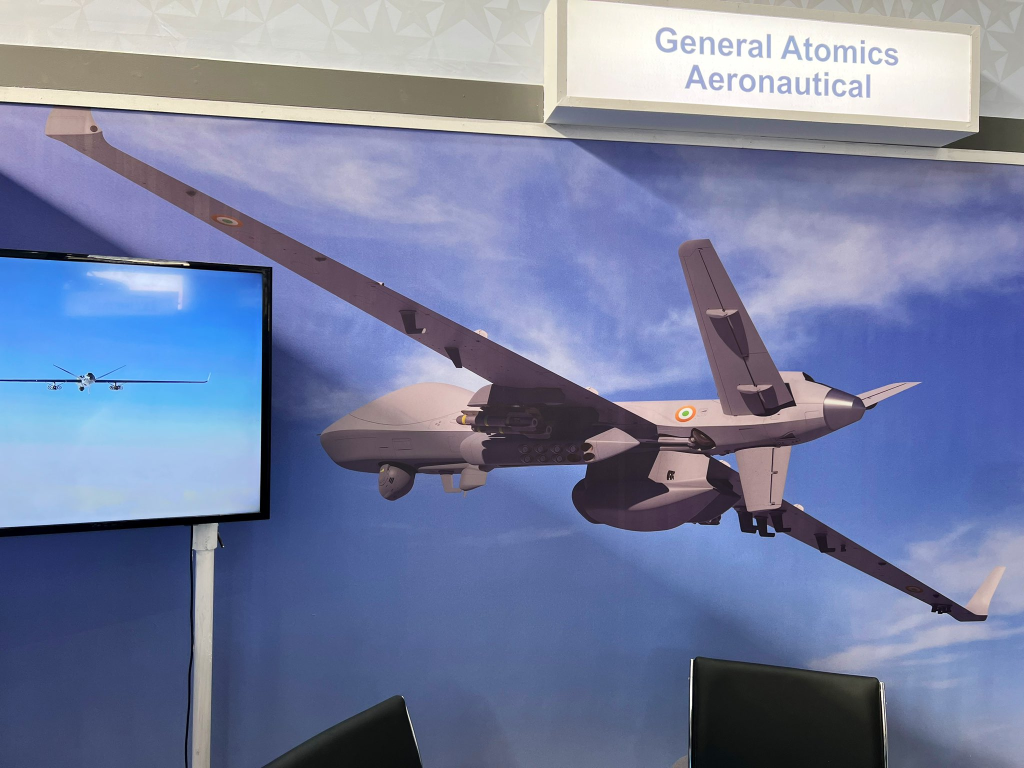
Seven years after the Indian government first requested a sale of Predator-type drones from the United States, it looks like a deal has finally come together and will be cleared by the Indian Ministry of Defence this week. Clearance at the highest levels of the MoD sets the stage for either an announcement or the deal itself when Indian Prime Minister Narendra Modi visits the United States from June 20-24.
Livefist learns that the shapeshifting deal is now an approximately $2-2.5 billion package for 18-30 General Atomics MQ-9 Predator-B/SeaGuardian optionally armed drones along with air-to-ground weaponry and support equipment — three each for the Indian Air Force, Indian Navy and Indian Army.
The MQ-9B SkyGuardian is described by General Atomics as the most advanced version of its Predator family of drones, with the SeaGuardian sporting a dedicated maritime surface search radar. It is possible that the package finalised is a mix of two versions, though all will be optionally armed. AGM-114 Hellfire munitions are likely to be the weapon chosen as part of the package. Hellfire versions also arm the Indian Air Force’s AH-64E Apache helicopters in service.
The Indian Navy has operated a pair of leased SeaGuardian drones from its Arakkonam air station in southern India since November 2020. The lease was extended for at least year, with both airframes seen to have been in operations till as late as December 2022.

The leased SeaGuardians, used liberally by the Indian Navy across a spectrum of operations over land and sea served to validate and confirm the Indian military’s requirement of drones that the procurement system had over seven years come to view as excellent, but just very expensive. Indian military tensions with China that began in mid 2020 played a major role making the SeaGuardian’s eye-watering price tag a little easier to swallow, culminating in the deal that’s now ready to be signed.

Indian interest in a fleet of Predator-type began during the Malabar exercises where the capability was on full display, but as a non-signatory to a crucial quasi-treaty on non-proliferation of long range weapons, the U.S. couldn’t get work started on getting a deal through the many layers of political clearance required for such a sale to India. In June 2016, India joined the Missile Technology Control Regime (MTCR), finally paving the way for formal talks to begin on a Predator package.
Only months later, then Indian defence minister Manohar Parrikar initiated discussions with the then U.S. Secretary of Defence on a state visit during the final months of the Obama Administration, specifying that India was looking to acquire armed MQ-9 Reaper armed drones for the Indian armed forces for intelligence, surveillance and offensive operations.
In 2017, the incoming Trump Administration quickly began work to clear the sale of armed drones to India. But hurdles emerged and for a time the U.S Govt proposed that India seek a package of unarmed SeaGuardian drones instead. Government to government negotiations continued for the next few years, with the configuration and numbers involved shifting at regular intervals, finally hitting a wall on price. At over $4 billion, the price tag was simply too rich given the procurement priorities at the time. But the door was left open, with a dedicated team keeping talks alive to pare down the numbers and arrive at a configuration that could be pushed through. Airframe requirement numbers dropped from 33 to 30 and then to 22 MQ-9B SeaGuardians in the span of a year.
Governments changed, things moved on, but the deal remained on the table, mainly because the three Indian armed services had attached high priority to the capability and wouldn’t back down or accept an interim measure in the form of similar drones from Israel or an in-the-works upgrade and weaponisation of India’s existing Heron Mk.2 drones.

In February 2020 on a reciprocal visit to India, then U.S. President Donald Trump confirmed that the U.S. was committed to providing India with unarmed and armed aerial vehicles.
In February this year, India’s HAL and General Atomics jointly announced that MQ-9B turbo-propeller engines would receive in-country MRO support at HAL’s Engine Division in Bengaluru, a late confirmation that the final deal being reported now was in sight.
The MQ-9Bs will be the most significant U.S. asset entering the Indian military in two decades since armament supply resumed following the 1998 U.S. sanctions in the wake of India’s nuclear tests. Such a drone capability has thus far been reserved for NATO allies, Israel and Japan.

Livefist do y’all have any copy-editing at all? Article was unclear and all over the place in terms of facts and figures.
> Livefist learns that the shapeshifting deal is now an approximately $2-2.5 billion package for 18-30 General Atomics MQ-9 Predator-B/SeaGuardian optionally armed drones along with air-to-ground weaponry and support equipment — three each for the Indian Air Force, Indian Navy and Indian Army.
3 times 3 is 9 last time I checked.
> Airframe requirement numbers dropped from 33 to 30 and then to 22 MQ-9B SeaGuardians in the span of a year.
Are these MQ-9B Sea Guardians or MQ-9A Reapers or both?
> The MQ-9Bs will be the most significant U.S. asset entering the Indian military in two decades since armament supply resumed following the 1998 U.S. sanctions
That seems like a BS claim considering we operate P8 Poseidons.